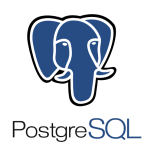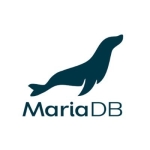I use MySQL as middleware to get the extracted data from the database. I work with MySQL as an administrator to set up the whole platform. And I document the recipe for setting up the MySQL database.
We are working with the latest version.
SQL is just a relational database. It is open source. It's pretty good. I have been using it for a long time.
Because I am the middleware guy I'm not the SQL database administrator. If I have any issue with it, I'm going to contact the right person. Sometimes, not because the version is not the latest version, there are some issues with it. Sometimes there's an issue with the server which creates issues with it. Then, when the administrator checks the status and makes notes, it works normally and the problem is fixed. With a big company you are not going to work directly with the MySQL database. We are the end user and not the administrator of the SQL database.
For MySQL, in terms of the usage or as the end user, I don't have much to recommend, as long as the query latency meets your requirements, it will be great. Otherwise, it's the horizontal scalability and you get more parallel in the implementation in terms of the SQL database regardless of the usage. This is probably much better than the vertical in terms of scalability.
I have been using MySQL this year.
If you are working in the cloud platform then you do have scalability because the cloud platform is usually AWS or GCP, and they provide this kind of scalability. If you get some issues with the query and latency or something like this, that is an issue of scalability and you can just adjust the horizontal or vertical scalability to meet your requirements.
But the company I was working with was a very big company. It's more than several thousand people and they usually have a lot of data that they are going to store in the MySQL database. They gather the data from the SQL database and then transfer it like ETL and you get data from all the different distributed systems and then put them into the centralized MySQL database. After that you're going to visualize this kind of data so that you can use the Power BI or that kind of tool to generate reports or to create a dashboard for the system. This company had its platform on-premises, but right now they are moving these technologies to cloud. That's why I'm talking about the scalability in two different ways cloud and on-prem.
For technical support, I'm the end user so I extract data or visualize the data from the SQL database. I didn't get too into the daily maintenance of the database.
The initial setup for the SQL database is not complex and it even integrates into the platform. You set up the recipe and then just follow the build book. Then it works as long as you follow the procedures.
Regarding the price, because it's the open source they have different licenses. Even for open source there's a license for the enterprise. I don't think it is expensive. Also for the scalability in the cloud, the price is based on the usage, such as, how much data you transfer.
For the best usage right now, the trend is to move the platform from on-premise to cloud. Then, you you really have the best flexibility to scale down or scale up based on your usage. You can make full use of the resources and then pay for whatever you use. Because if you have it on-premise you always pay the same price no matter how much usage you have. So one of my suggestions is if you plan to set up the platform for MySQL, it would be best to go directly to the cloud solution.
On a scale of one to ten, in terms of the usage for the middleware team and the end user of the SQL database, I would say it's around an eight at least. I cannot say from a database administration perspective.
To determine what would allow me to give it a 10, I would first have to get more experience using it on the cloud version.



















